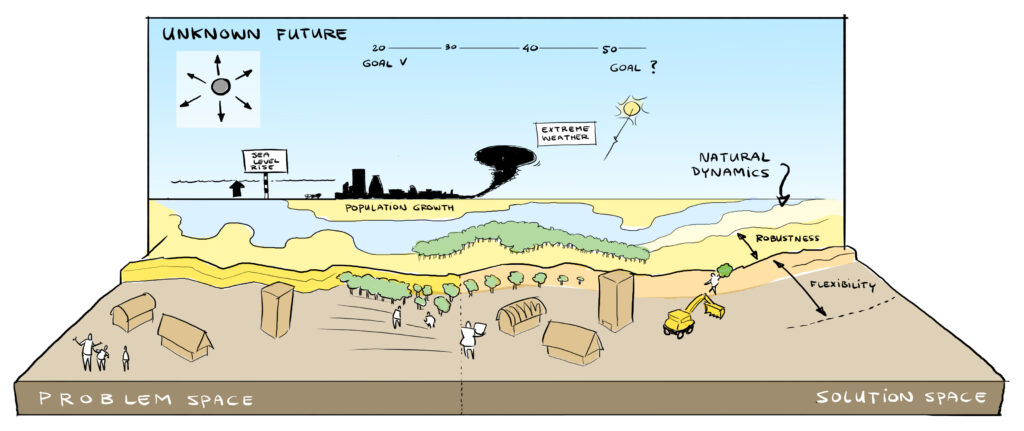Guidance: Dynamics identification in Building with Nature
- Uncertainty can be categorised according to its types, sources and levels
- Uncertainty can be reduced by further research, but will never be fully eliminated
- The type of problems Building with Nature addresses are typically highly complex and deeply uncertain, where all types and sources are present
- Uncertainties relate both to the problem at hand and to the proposed solution
Decisions need to be taken despite the presence of uncertainties. Not accounting for all types, level and sources of uncertainty implies an increased risk of failure. Identifying uncertainties is important for both successful Building with Nature and traditional design and implementation. For planners, practitioners and all other stakeholders it is especially important to be aware of the different kinds of uncertainty that play a role in the ecosystem and how Building with Nature can be used to support management of the physical, social and technical system in a sustainable and cost-effective manner. The main aim should not be to eliminate or minimise dynamics and uncertainty, but rather to formulate plans that ensure system performance under different conditions.

It is important that planning commences from a common understanding of what constitutes uncertainty in projects: its different types, sources and levels. The uncertainties which need to be addressed concerning the problem space (e.g., how much sea-level rise can we expect) are independent of the uncertainties related to the solution itself (e.g., can a mangrove greenbelt adapt to sea-level rise of 50 cm). Thus, the uncertainties in the solution space arise due to interaction between the performance of the solution and the outside world.

Uncertainties in Building with Nature projects are exemplified in project factsheets , covering the six landscapes; Sandy Coasts, Muddy Coasts, Lowland Lakes, Rivers & Estuaries, Cities and Ports. The example cases are Hondsbosche Dunes (Sandy Coasts), Wave attenuating willows (Rivers & Estuaries), Marker Wadden (Lowland Lakes), Rehabilitation of mangrove coast in Indonesia (Muddy Coasts), Werven Park Dordrecht (Cities) and the Mud Motor (Ports). A successful strategy focuses on the inherent dynamics and uncertainties in both the problem and proposed solutions and acknowledges that not all uncertainties need nor can be eliminated.
Download the white paper
Further reading is available in the White paper “a future proof strategy to cope with a changing and uncertain world”, Chapter 1 and 2.
